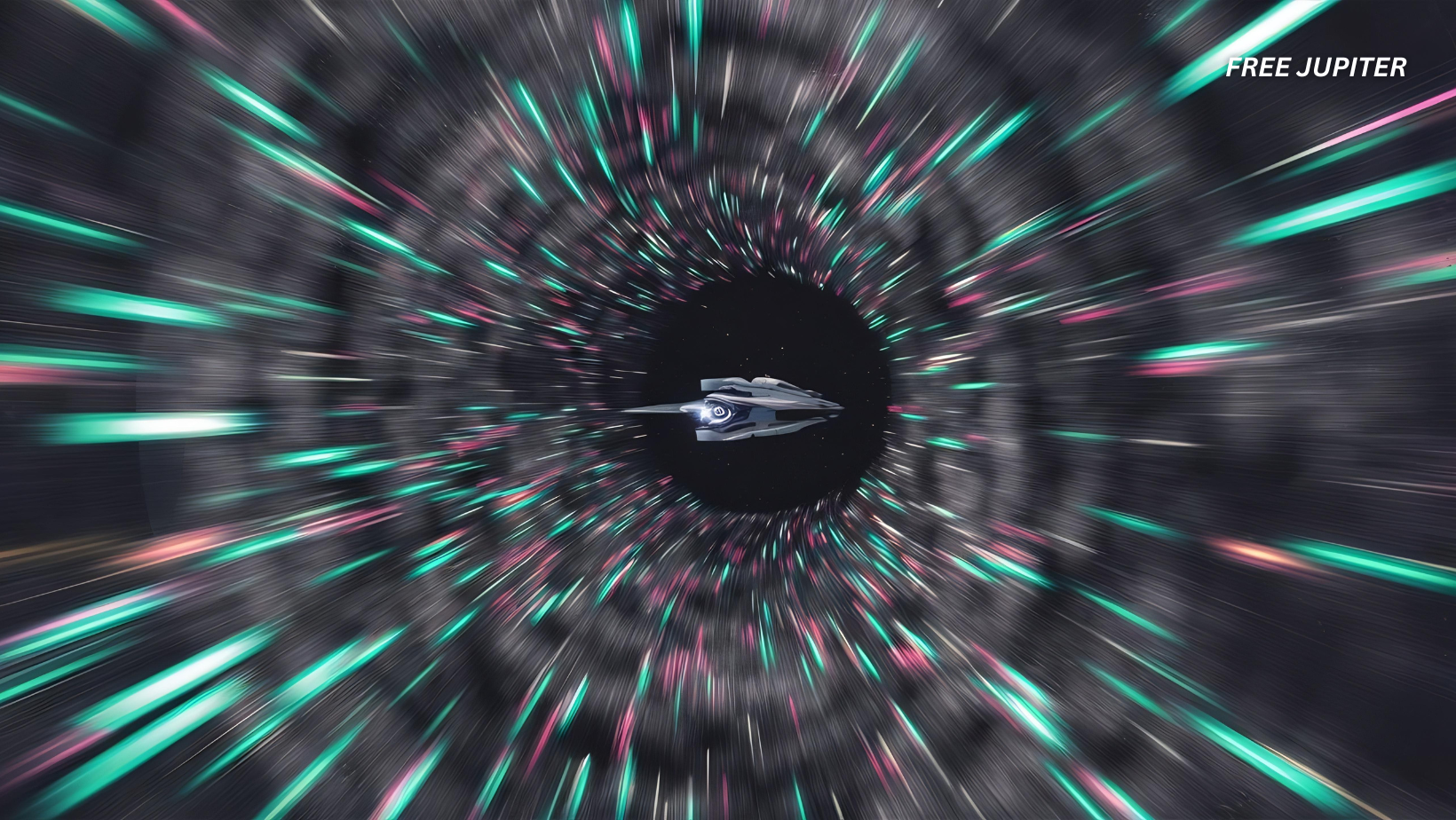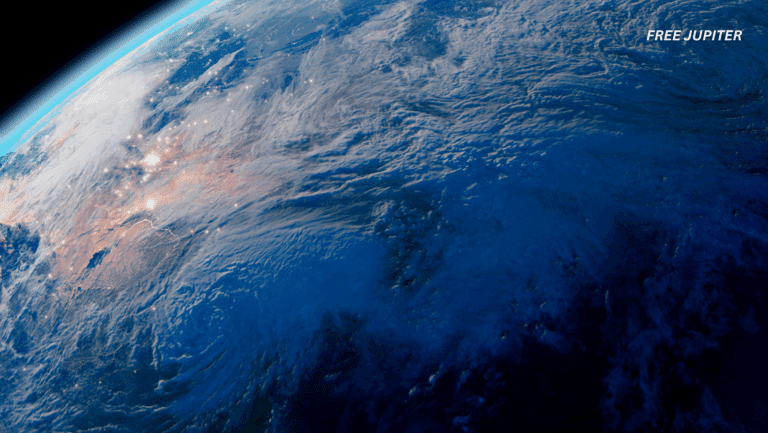Friendly Note: FreeJupiter.com shares general info for curious minds 🌟 Please fact-check all claims—and always check health matters with a professional 💙
For years, warp drives have been the stuff of science fiction. Thanks to shows like Star Trek, many of us picture spaceships traveling faster than light by creating incredible energy from matter and antimatter collisions. The Federation’s warp drive, for example, uses this explosive power to push ships across the galaxy at unimaginable speeds. But for actual scientists, the idea of warp travel has always been complicated because it seemed to require something called “exotic matter” or negative energy — things that, as far as we know, don’t exist anywhere in the universe.
Now, a new scientific study changes the game. Researchers say they have developed a physical model for a warp drive that could work without relying on these mysterious, non-existent forms of energy. This development makes the idea of faster-than-light travel a bit more believable — at least in theory.
Warp Drive 101: How Does It Work?
To understand why this matters, it helps to get a basic picture of what a warp drive is all about. Imagine space as a giant, stretchy fabric, like a huge tablecloth. Normally, when a spaceship wants to move, it “walks” across this fabric from point A to point B. But what if, instead, the fabric itself could be stretched and squeezed so that point B comes closer, and the ship doesn’t have to move through space in the usual way? That’s the essence of warp travel.
In 1994, physicist Miguel Alcubierre proposed a mathematical model — now called the Alcubierre drive — that showed this could work using Einstein’s theory of general relativity. His idea was to create a “bubble” around a spaceship where space itself contracts in front of the bubble and expands behind it. The ship would ride inside this bubble, not moving locally, but effectively traveling faster than light because the bubble moves space around it.
This bubble concept is key. Inside it, the ship and its passengers wouldn’t feel any acceleration or extreme forces — they’d just be sitting inside a comfy little pocket of normal space while the universe outside shifts.
The Problem: Energy Needs and Exotic Matter
Here’s the catch that’s kept warp drives stuck in science fiction: the Alcubierre drive requires enormous amounts of energy. To manipulate spacetime in this way, you’d need far more energy than we can imagine — potentially more than all the energy in the observable universe combined.
But even more puzzling is the need for exotic matter with negative energy. Unlike the normal matter that makes up stars, planets, and people, exotic matter would have strange properties like negative mass and could theoretically warp space in ways normal matter can’t. The problem? No one has ever found or created this stuff. It remains purely hypothetical.
Because of these massive hurdles, most physicists dismissed the Alcubierre drive as interesting theory but not something humans could ever build. NASA’s Eagleworks Laboratories spent years trying to test ideas around warp propulsion but never cracked the code.
The New Breakthrough: Warp Drive Without Exotic Matter
The new study from the Advanced Propulsion Laboratory (APL) presents a fresh take that’s shaking things up. Instead of focusing on pushing a ship through space, the researchers thought about floating bubbles of spacetime themselves that can move independently, almost like little islands in the cosmic ocean.
This subtle shift in perspective lets them design a warp drive model that almost completely removes the need for exotic negative energy. Instead, the model uses only positive energy and the natural flexibility of spacetime bubbles to achieve the warp effect.
This means the drive could theoretically function under the known laws of physics, without relying on any speculative or imaginary materials.
Why This Could Change Everything
The implications are huge. If a warp drive doesn’t need negative energy, it suddenly becomes a concept grounded in reality — even if a very distant reality. The enormous energy requirements still exist, but at least they no longer involve impossible materials.
It’s like discovering a new kind of engine that runs on regular fuel instead of a mythical power source. That’s why physicists who have long studied warp drives, including Miguel Alcubierre himself, have praised this new model.
Imagine the excitement of having the original scientist behind warp drive concepts saying, “Yes, this new idea could really work!” It’s akin to getting a nod of approval from Albert Einstein for a breakthrough in physics.
Read more: Multi-Billion-Year-Old ‘Coral’ Found on Mars by NASA
What’s Still Holding Us Back?
Despite the excitement, it’s important to keep expectations in check. The energy demands for these spacetime bubbles remain astronomical by today’s standards. We also don’t yet know how to create or control these bubbles, nor how to safely build a spacecraft that could harness them.
So, while the model is physically sound, the technology to bring it to life is still far beyond our reach. The researchers themselves say the warp drive is still “in the far future,” maybe decades or even centuries away.
Why We Care About Warp Drives Anyway
Traveling faster than light isn’t just about cool sci-fi adventures. It’s about the future of humanity exploring the stars. Even the nearest star system, Alpha Centauri, is more than four light-years away — meaning it would take four years to get there traveling at light speed, which is already unimaginably fast.
Without a method to travel faster than light, our chances of visiting other star systems or truly exploring the galaxy are slim. That’s why warp drives have fascinated scientists for so long: they offer a theoretical way to make interstellar travel possible within a human lifetime.
Read more: China Found Graphene in Moon Dust That Shouldn’t Exist—Here’s Why It’s a Huge Deal
The Road Ahead
So where do we go from here? The new warp drive model opens fresh doors in theoretical physics and space propulsion research. It challenges decades-old assumptions and invites scientists to rethink how space and time might be manipulated.
While we’re not boarding warp ships anytime soon, this discovery makes faster-than-light travel seem less like fantasy and more like a future challenge to solve.
One day, maybe far ahead, humans could sail across the stars — not by rushing through space, but by bending the space itself around us.
And that, for now, is a journey worth dreaming about.










